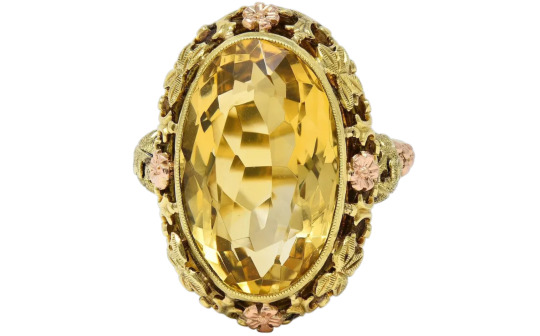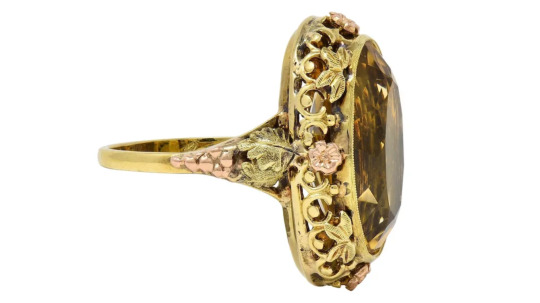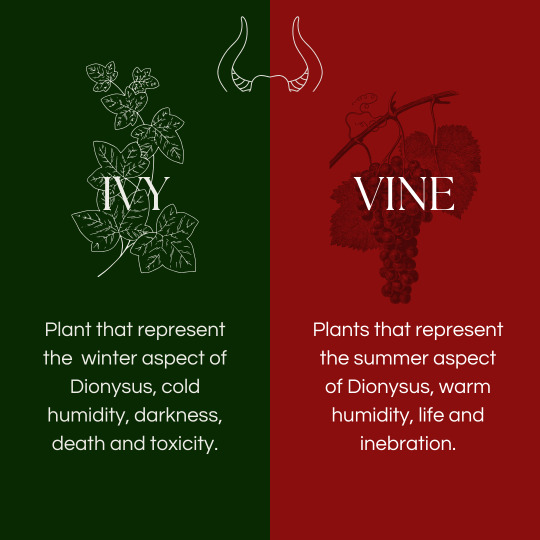#grapevine
Explore tagged Tumblr posts
Text




Fruitful budou (grapevine) antique kimono. I love how the bright color scheme strays from the more purplish/maroon tones often used for grapes patterns
1K notes
·
View notes
Photo

~ Yellow | Blue | Green ~
247 notes
·
View notes
Text

Forgot I took the pic yesterday. What did I call them? Grapevine?
They’re like 12 here or whatever man idfk
#coko doodles#work doodles#fankids#grapevine#ahahahahaha#goofy ass name#rottmnt#tmnt#rise of the teenage mutant ninja turtles#tmnt iteration#drawing#doodle#sketch#teenage mutant ninja turtles#The grapevine
248 notes
·
View notes
Text


Antique 14k Gold Citrine Grapevine Ring
104 notes
·
View notes
Text

393 notes
·
View notes
Text
hiding in grapevine

#grapevine#cats of tumblr#hide and seek#hiding#cat pictures#cat people#cat art#cat blog#cute cats#cute kitty#cute animals#so cute#cuteness#cute aesthetic#cute cute cute#cute core#kitty#cats#pets#garden#fluffy#fuzzy#kitty cat#fluff#cute
57 notes
·
View notes
Text

#photographers of tumblr#photographers on tumblr#lensblr#photography#original photographers#bay area#norcal#california#july#summer#grapes#grapevine#vineyard#garden#aesthetic
194 notes
·
View notes
Text

Many are the faces of the Hellenic God Dionysus, but the duality of his nature is sometimes connected with two specific plants associated to the god. Dionysus relates to many plants such as Fig, Oak, Pine, Vine and Ivy, these two are specifically connected with two opposite faces of the god.
Grapevine starts its annual growth cycle in spring with bud break. During spring and summer, the plant grows and after flowering the vine sets the fruits that are usually harvested in early autumn. Following the first frost the leaves begin to fall as the vine starts to enter its winter dormancy period. The following spring, the cycle begins again. Following the same annual cycle Dionysus is seen as a god that is reborn every spring, bringing during the hot season prosperity and abundance before disappearing in winter. Grapevine grows thanks to the hot weather and humidity and so it represents the warm fertilizing humidity power of the god. Grape is used to create wine which is the drink sacred to Dionysus because of its ability to release mental faculties.
Ivy on the other hand, blossoms in the autumn when the vines are harvested and bears fruit in the spring. As an evergreen plant, ivy needs cold weather and humidity to grow and flower. Ivy vines crawl as snakes and in the myth, ivy appeared soon after the birth of Dionysus to shelter the child from the flames that burned the mother's body. To its freshness was attributed the virtue of dispelling the ardor of wine, so Dionysus was believed to have commanded his worshippers to crown themselves with it. Ivy, in contrast to the vine that bore fruit bearing vitality and exaltation, produced a poison that sterilized and had medicinal virtues that were refreshingly depurative and narcotic. The plant is also connected with thunder and lightning and was believed to have the power to protect from lightning and cure sore throat and cough.
Thus these two plants sacred to Dionysus are contrasted with each other in an eloquent contrast: the vine, drunk with light, is a child of heat and returns the rays of the sun by warming, with its libation, bodies and souls, while the ivy shows itself to be cold in nature; indeed the sterility and uselessness of its first sprouts recall night and death.
Their affinity is rooted in the very essence of the dual-figured god, whose nature is expressed from the earth by means of them: light and darkness, warmth and coldness, intoxication of life and breath of death that withers everything; the multiplicity of the Dionysian aspects struggling with each other and yet conjoined with each other is manifested here in vegetal form, stands in struggle with itself and prodigiously transitions from one form into the other.
Dionysus rules over all moist and hot creatures whose symbol would also be wine, as a hot and moist substance. In wine, heat is made ardor drink of fire that overwhelms everything, that ignites the soul and the body. But the moist heat is contrasted with the moist cold that as a Dionysian element, is manifested in ivy, a plant that greens even in winter when the Dionysian festivals take place.
#witchcraft#witchblr#witches of tumblr#paganism#pagan witch#hellenism#hellenic polytheism#dionysus#ivy#grapevine#darkness and light#mythology#duality#herbalism#italianwitch#strega
486 notes
·
View notes
Text

Dionysus Aesthetic
#dionysus#greek gods#god of wine#wine#feast#leopard#grapevine#thyrsus#mount olympus#olympus#greece#ancient greece#greek mitology#greek epic#zeus#son of zeus#ancient greek mythology#bacchus#ancient rome#roman mythology#ariadne#aprhodite#greek mythology#mythology#aesthetic#silenus#greek aesthetic#greek and roman mythology#greek culture#mitologic
73 notes
·
View notes
Text



greenpurp doodles cuz im burnt outttt aaahhhh
human designs I guess idk


also went to a convention the other day who gaf tho…
#art#fanart#greenpurp#green x purple#grape duo#grapevine#grapeduo#avm#animation vs minecraft#purple avm#green avm
32 notes
·
View notes
Text

A ceramic vine clutches a pot containing dahlias and is the perfect detail for this porch. Designer Ronald Grimaldi says 'I wanted to create a cool, refreshing 'living porch' where people can relax, dine, read, drink, and meet in comfortable and luxurious surroundings.
Interior Visions: Great American Designers and the Showcase House, 1988
#vintage#vintage interior#1980s#80s#interior design#home decor#porch#ivy#chintz#plants#wicker#shingles#grapevine#Victorian#style#home#architecture#desk#antique#furniture#yellow#aqua
337 notes
·
View notes
Text



color her purple ⋆˚✿˖°





#girlblogging#purple#moodboard#whimsygoth#witchy vibes#girly tumblr#esoteric girl#weird girl#passion for fashion#weirdcore#black cat#foryou#fiona apple#girl interrupted syndrome#90’s aesthetic#grapes#grapevine#hello kitty#trashy 2000s#this is what makes us girls#chappell roan#girl core#grape soda#booklr#betty boop#lana del rey#lizzy grant#body electric#messy girl#grunge
61 notes
·
View notes
Text

#photographers of tumblr#photographers on tumblr#photography#lensblr#original photographers#bay area#norcal#california#fall#autumn#november#grapevine#vineyard#aesthetic
42 notes
·
View notes
Text

D2 to E4
Grey and a scattering of others belong to @corruptimles Mars and scattering of others belong to @robboyblunder
#among us#among us oc#grunt#henchman#astronaut#scifi#chess#modley crew#clip studio paint#modleyverse#i think alot of grey and . how much he makes himself not a person but his personhood still shows uhg#poor guy#grey rook#capt#little blue#north white#grapevine#reese#anise#clover#patty#mars#algernon#ilya#equinox
44 notes
·
View notes
Text

Lesbia and her Sparrow
Artist: Edward Poynter (British, 1836–1919)
Date: 1907
Medium: Oil on canvas
Collection: Bonhams
Description
Considered among Poynter’s more important works, Lesbia and her Sparrow immediately met with critical approval when shown at the Royal Academy in 1907. Poynter, who is regarded second only to his friend and mentor Frederic Lord Leighton as a master of Victorian classicism, invariably portrayed scenes from Antiquity. While some were based on Greco-Roman mythology others, as here, were inspired by its literature and specific historical figures. The story of Lesbia and her Sparrow was told by the Roman poet Gaius Valerius Catullus (c. 84-54 B.C.), who referred to Lesbia in 25 of his surviving 116 poems. Lesbia is generally considered by scholars to represent Clodia Metelli (b. c. 95 BC), wife of Metellus Celer, who of noble birth was known for her beauty, her talent as a poetess but also for her scandalous lifestyle, counting among her many lovers Catullus himself. Theirs however was no simple love story but was beset with bitter jealousy and remorse. To this end the poet immortalized her in the guise of Lesbia in impassioned verse and referred to her bird in such lines as “Sparrow! my pet’s delicious joy, Wherewith in bosom nurst to toy. She loves, and gives her finger-tip. For sharp-nib’d greeding neb to nip”. At the height of their affair the sparrow, who eventually died, is considered to symbolize the poet’s enduring love and may also convey erotic connotations. Although present day admirers of Poynter’s work might assume that Lesbia’s name was linked to her sexual inclinations, it was in fact a common Roman name and one chosen by the Latin poet because it had an identical metrical value to that of his great love Clodia. In addition, the name Lesbia carried literary associations with the Greek 7th century BC lyric poet Sappho who lived on the island of Lesbos and whose work Catullus much admired.
#painting#oil on canvas#lesbia and her sparrow#literature#poetry#woman#sparrow#garden#roman poetry#gaius valerius catullus#beauty#roman architecture#costume#grapes#flowers#cage#pillows#marble bench#grapevine#seated figure#edward poynter#british painter#british art#fine art#oil painting#artwork#europen art#20th century painting#20th century art
46 notes
·
View notes
